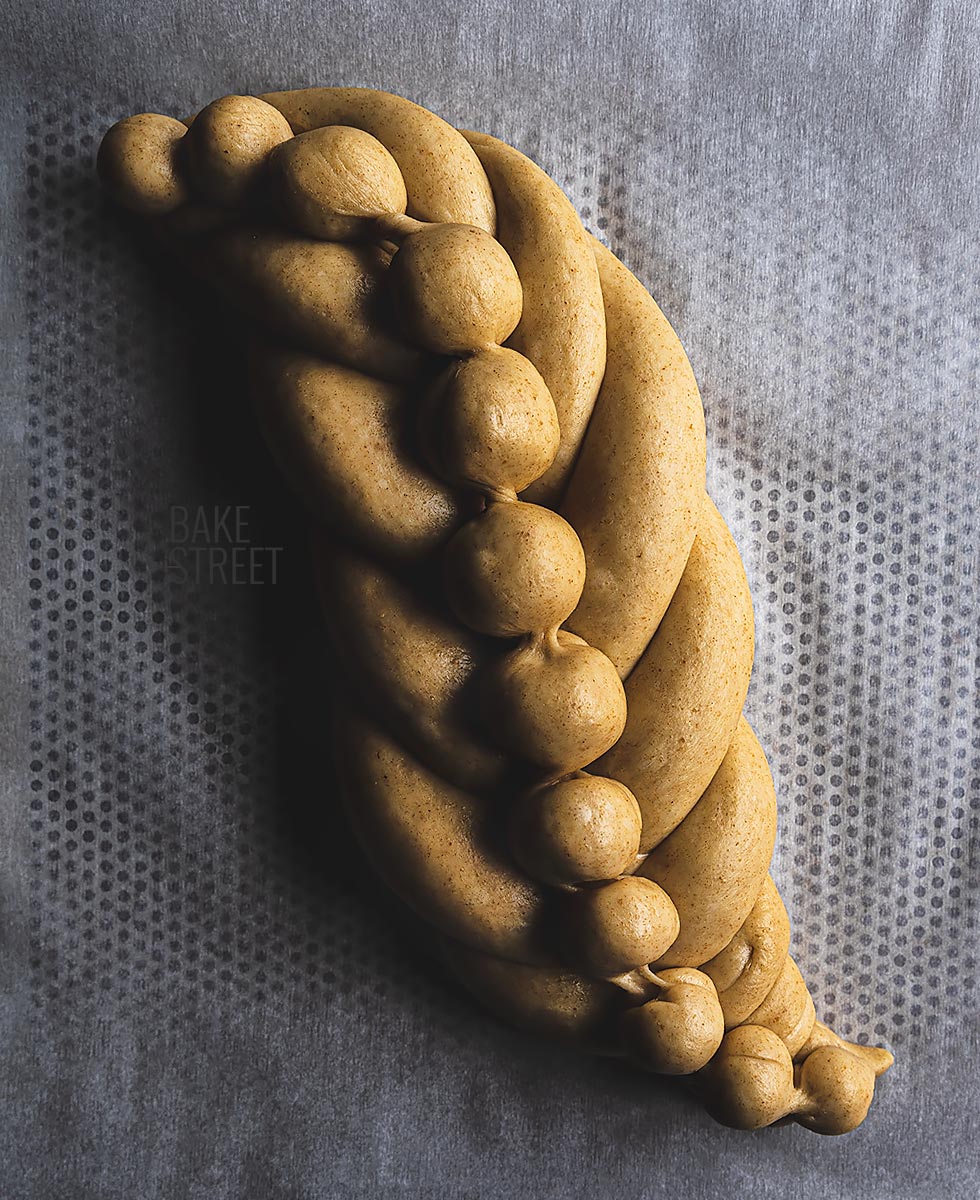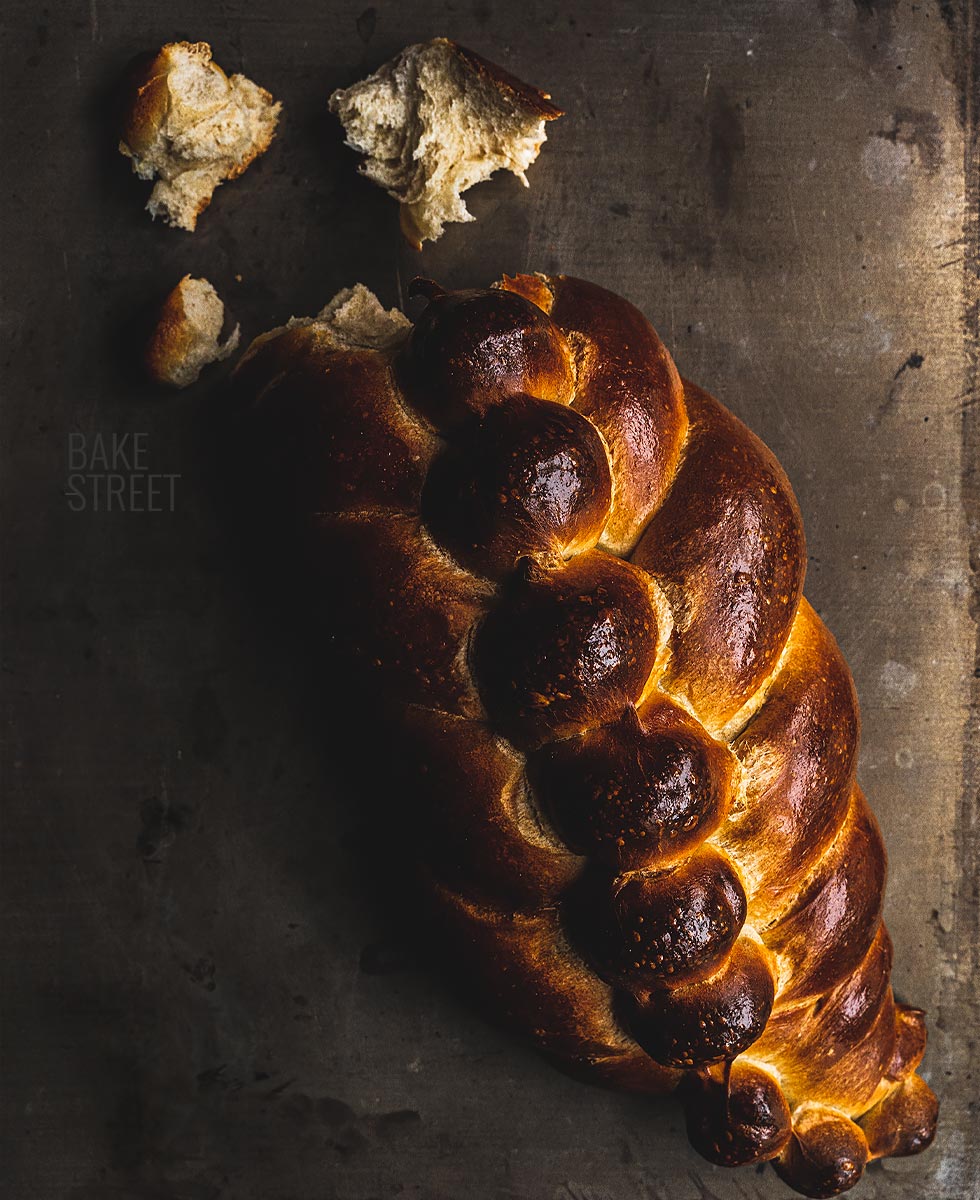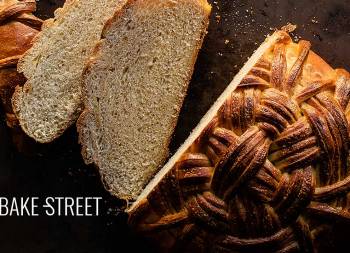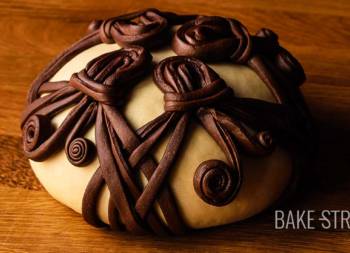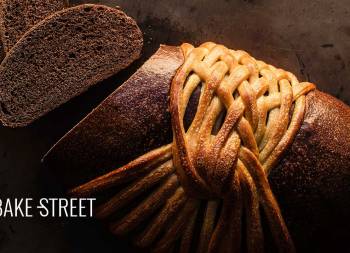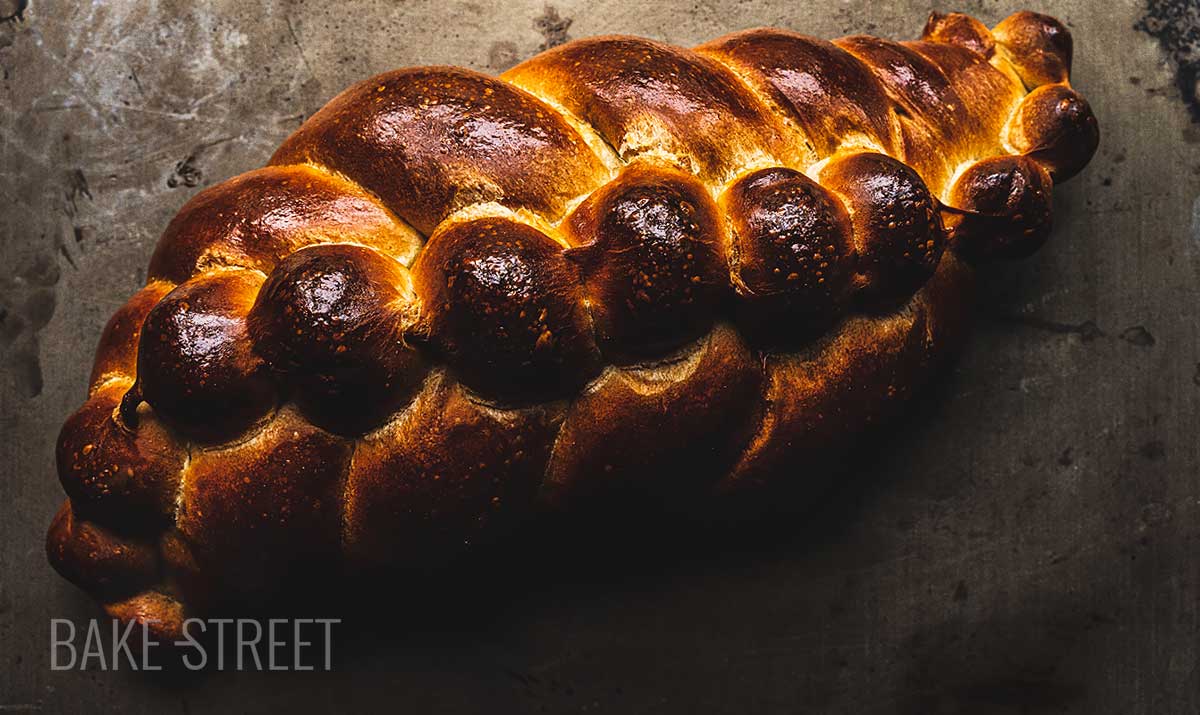
Sourdough Challah Bread
I’ve been wanting to make a recipe for Challah bread for a long time. I remember that I had a season, almost when I started with the blog, that made a lot of this variety of bread. But it’s also true that I didn’t know much about dough at that time and the result wasn’t usually what I expected. Something that is completely normal when we don’t know well how to work with dough, how to shape and manipulate it. So a few days ago I got this Sourdough Challah Bread and made my day.
First of all, I want to thank Katharina for the incredible work she does, so creative and inspiring. She specializes in dough and bread, as well as teaching. Be sure to check out her profile because it is absolutely recommended. The challah I leave you today is inspired by her beautiful creations. And the recipe that I leave you is based on one of her own, only modifying some things..
She works with a poolish and I decided to make a hybrid dough; I use sourdough and dry yeast. I also modified some of the ingredients according to my flour. In addition to adjusting the process of making, rising and baking.
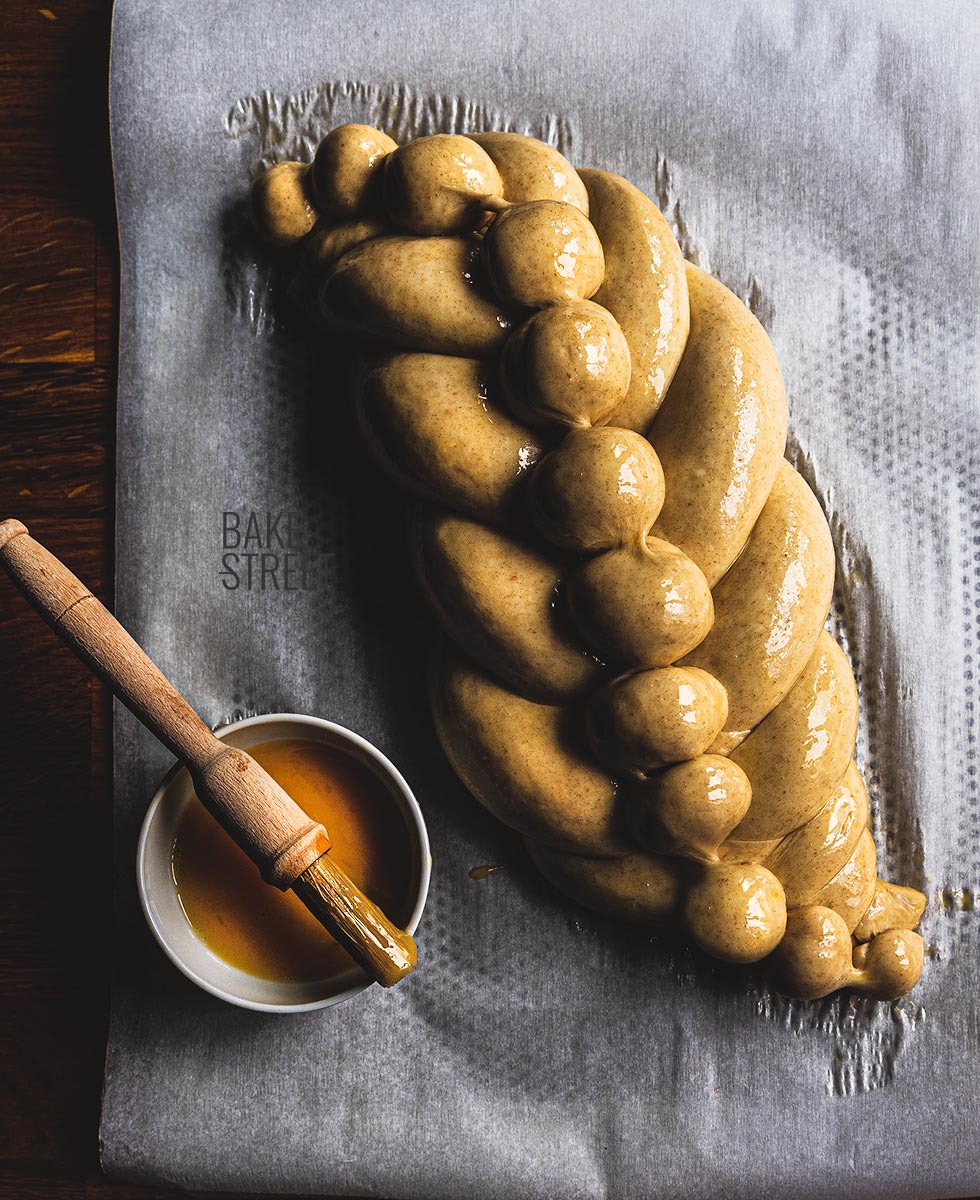
Challah origin.
The word challah (ḥallah plural: challot/ḥalloth/khallos) (Hebrew: חלה) is also called khale (East Yiddish, German and West Yiddish), berches (Swabian), barkis (Gothenburg), bergis (Stockholm), birkata in Judaeo-America, chałka (Polish), colaci (Romanian) and kitke (South Africa). However, the etymology of the origin of the word “challah” is somewhat mysterious.
There are several possibilities:
- The term challah comes from the biblical commandment of “hafrashat challah“, which separates the challah from the cohen or priest. The word itself can come from the root of the word “Chalal” which means space.
- Challah can come from “Gal” referring to a circle in Hebrew.
- Others suggest that “challah” may derive from the fusion of: Hilu or hala, the Arabic origin for “sweet”.
The name “challah” was given to bread in southern Germany during the Middle Ages when it was adopted by the Jews for the Shabbat and the holidays. John Cooper, points out that the first mention was in the 15th century and that the term was coined in Austria. Before this, bread was called “berches,” a name still used by some Jews today.
Every Friday night, it is the challah that announces the Sabbath, just as on the Jewish holidays.
The prayers and customs that accompany the Mitzvah when preparing challah for the Sabbath are the same everywhere in the world. Linking the present to the Book of Leviticus, when God instructed Moses to make challah from two to six strings. For more than 4,000 years since then, the Jews have delighted in challah bread for the Sabbath.
On Friday nights and holidays, this bread is also a reminder of the purity of the Sabbath, as well as a reminder of the deprivation of the Jews of Eastern Europe who lived on black bread during the week.
Jewish origin.
It is customary to eat it on Friday night and the next two meals on Saturday (Sabbath in Hebrew culture) in addition to the holidays. Respecting the Jewish rule of eating called Kashrut or Kosher, the Challah will never contain dairy products. Therefore, it will not contain milk or butter, since this specific rule states that milk cannot be mixed with meat, and the Challah is often used for this purpose.
Before eating such bread, the Jews bless it since it commemorates the manna that fell from heaven during the 40 years that the Israelites wandered in the desert after the Exodus from Egypt. The name manna is the biblical name for the so-called food that fell from heaven.
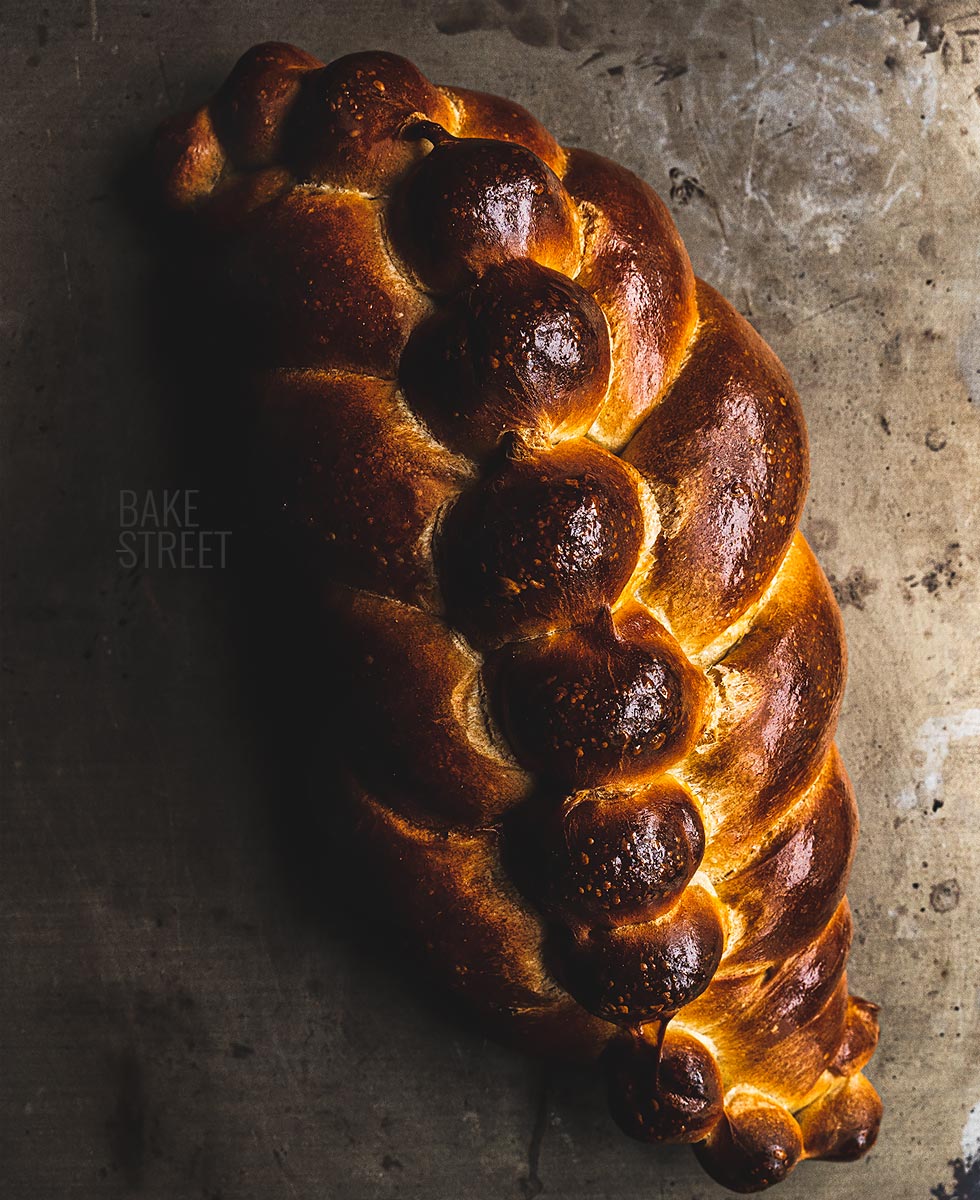
Also called Challah is a small portion of dough that is separated before making the braid.
Result of practicing a Jewish law: A small portion of dough that in biblical times was reserved as a tax for the Jewish priesthood, a tithe for the Kohen, should be discarded.
Since the Bible did not specify how much to set aside, the rabbis came to an agreement. Private individuals should set aside 1/24th of a dough while professional bakers should set aside 1/48th. Today there are still those who follow this ritual, but the separated part is discarded.
The shape of the challah is not random (in our case, it probably is), its appearance is linked to a symbol.
- On New Year’s Day, the Challah are usually in the form of a spiral, symbolizing the cycle of the year. Sometimes the top is painted with honey in honor of the “sweet new year”.
- The braids symbolize love, truth, peace, creation, harmony, family connection, unity, and justice.
- Twelve humps recall the miracle of the 12 loaves for the 12 tribes of Israel.
- The round loaves on Rosh Hashanah symbolize continuity.
- The ladder-shaped ones, before the fast of Yom Kippur, represent the ascent to higher levels.
According to Jewish law and practice, the salting challah is a critical component of Hamotzi, the blessing on bread.
Salt has always played an indispensable role in Jewish life and ritual dating back to the Biblical times of ancient Israel. With large quantities located in the Dead Sea region of the historical land of the Jewish people, salt was considered the most essential and common of all elements, which could not be missing from this bread either.
Recipe Sourdough Challah Bread
Ingredients for one bread
- 400 g bread flour
- 102 g water
- 70 g sourdough 100% hydrated
- 2 g dry yeast
- 95 g egg
- 60 g light olive oil or sunflower or grape seed
- 30 g honey
- 10 g salt
Instructions
FIRST DAY
Prepare the sourdough for the challah.
- We must use a strong, active sourdough. If you have it in the refrigerator, remember to give several refreshments before using it.
Make challah dough.
- In the KitchenAId bowl, add all the ingredients except for the honey, salt and oil.
- Knead at speed 1 with the hook and make a homogeneous dough. We will stop the KA as many times as necessary to lower the dough from the hook, even helping a little kneading by hand. It is a dough that will take some work to develop the gluten.
- We will combine kneading with resting to avoid the dough taking too much temperature due to friction. Every time we make a rest, cover the bowl with a shower cap or plastic film.
- Add the salt after the first kneading and rest we do to the dough. Knead very well to help it integrate into the dough.
- Incorporate honey and mix again until fully integrated.
- Once we have a developed dough with a smooth and soft appearance, add the oil. I recommend you do it in 3 batches.
- Add a little and knead until it integrates completely into the dough. Repeat the same process until everything is added.
Make bulk fermentation.
- Remove the dough out of the bowl and dough rounding gently.
- Put it in a container, previously greased. Leave it until it grows 1/3 of its volume. In my case it was 1 hour and 30 minutes at 72ºF/22.2ºC.
- Refrigerate until the next day.
SECOND DAY
Temper the dough and divide.
- Remove the dough from the fridge and temper it before working with it. In my case I left it for 1 hour and 15 minutes at 73,4ºF/23°C.
- The dough will triple in volume overnight.
- Divide the dough into 6 equal pieces of 125 g each. We will use 5 of them to braid the challah and the last one to make the upper decoration in the shape of a pearl chain.
Shape the strings for the challah.
- Preshape gently trying to give each piece a disc shape.
- Stretch all the pieces with the help of a roller pin. Leave to rest for 5 minutes so that the gluten relaxes and does not put up any resistance when stretched.
- Stretch again, trying to give a larger diameter. There is no specific size, the ideal is to stretch the dough without forcing it to shape the strands later.
- Roll it up on itself and stretch it in the same way we would do with baguettes. We put both hands in the center and slide one of them to each side.
- Let them rest, covered, for 8-10 minutes to relax.
Shape challah.
- Stretch, for the last time, the challah's strands before shaping it. Try to refine the ends for a more beautiful finish.
- Braid the challah the way I show you in the video. Put 3 strands on one side and 2 on the other. Pass one cord placed at the end to the inside of the other side and repeat the same process until all the bread is braided.
- Sharpen the ends.
- To shape the upper balls, take the cord that we have reserved for this use. With the edge of your hand, roll it over and form balls. Try not to go too far when forming the balls to prevent them from separating. We must achieve a chain of balls joined together, as if it were a pearl necklace.
- With the help of a fine roller pin or even the edge of our hands if we don't have any, press the central part of the challah in a longitudinal way.
- Place the ball chain and adjust it. If we have any pieces left over at the end, remove them.
- Turn the tips, if we wish, to give it a more artistic look.

Make final proof.
- Put the challah on a perforated tray lined with baking paper and covered with film.
- Leave it until it doubles in size, in my case it was 4 hours 73,4ºF/23ºC. It is very important that you carry out the second fermentation well to avoid the bread to force its way into the oven and end up with a torn appearance.
Bake.
- Preheat the oven to 347ºF/175ºC.
- Brush the surface of the challah with beaten egg.
- Bake at medium height for 30 minutes or until the interior temperature is 190º-194ºF/88º-90ºC. This indicates that the baking has finished.
- Take it out and let it cool down completely on a rack.

Notes
- The type of flour that you use to make it, will condition the amount of water that the dough needs. If it has less strength or protein, it will need less quantity and if it has more strength, it will need more. As well as taking into account its absorption capacity, it can vary even if it has the same strength as the one I have used.
- If you want to do it without sourdough, just omit it and add to the dough 35 g of water + 35 g of flour. In this post I tell you how to change formulas with sourdough or yeast.
- The amount of yeast can be reduced without problems. But keep in mind that the rising time will be longer if you do it at this temperature. When the hot weather arrives, 86ºF/30°C, reduce to 1 g of dry yeast.

- You should leave the dough to rest so that you can stretch the strands and shape the bread without problems. If the dough offers resistance, it is because the gluten is tense and it will always try to return to its initial state.
- Watch the video as many times as you need before you braid the challah. Handling too much dough will not leave us with good results. You can even practice with laces.
- Carrying out the final fermentation well, will allow us to obtain a Challah bread without any cracks or tears on its surface. Be patient and remember that the proofing times are indicative since they depend on the outside temperature. They can be higher or lower.
- Do not exceed the baking time, otherwise you will get a dry bread.
- It is kept in perfect condition for 4-5 days in a zip-top bag.

If you like this kind of bread, be sure to make this Sourdough Challah Bread. Don't let the fact that it contains this preferment ingredient get you down. In the end, it is just another ingredient that will not only help you to proof the dough, but will also bring flavors, aromas and longer useful life to our preparation.
Its process is very easy to carry out, only that you will have to give an intensive kneading to achieve a perfect development of gluten. Don't worry, take a rest to facilitate the development process and it won't be difficult.
I can assure you that it is a perfect bread to accompany your favourite dishes, both sweet and savoury. You know I have a sweet tooth... So I usually enjoy it on toast with bitter orange jam or just as it is with honey. Delicious! ;)
I wish you a wonderful start to the week.
Big hugs,
Eva
Sources: Aish.com
